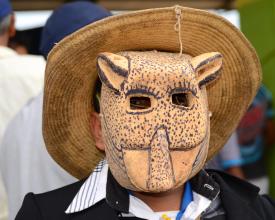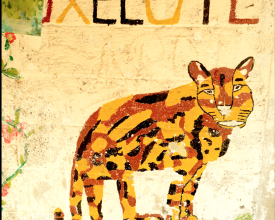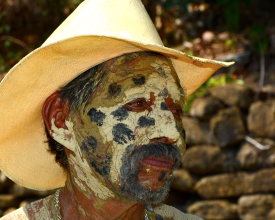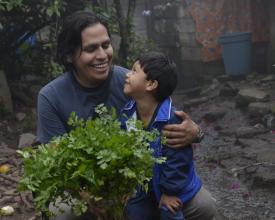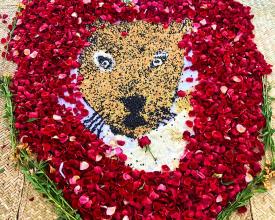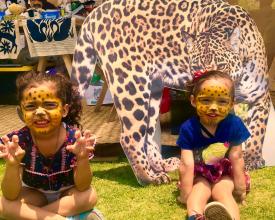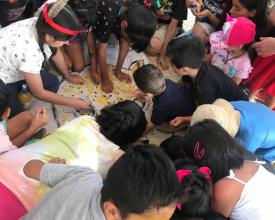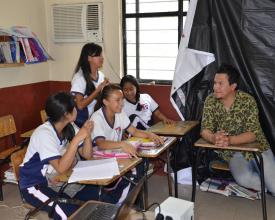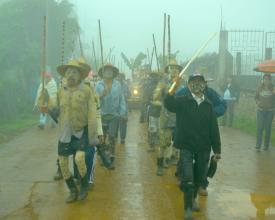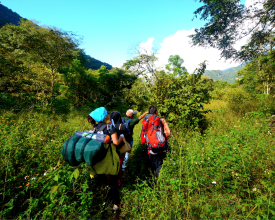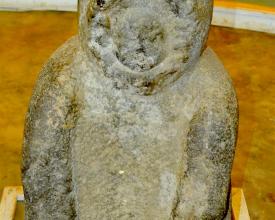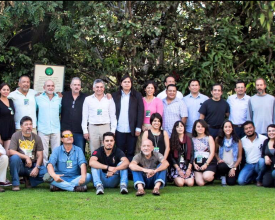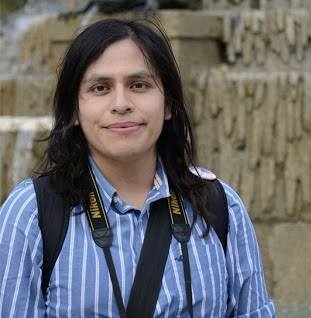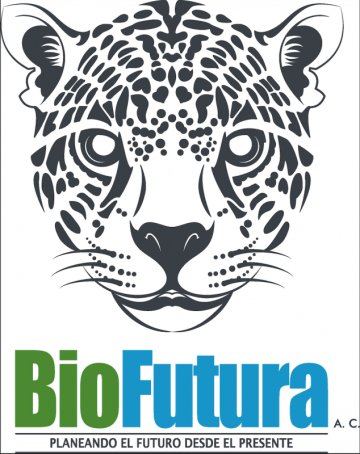
Jaguar, Ocelotl, Tepeyollotl: the heart of the bush and biocultural conservation in natural areas
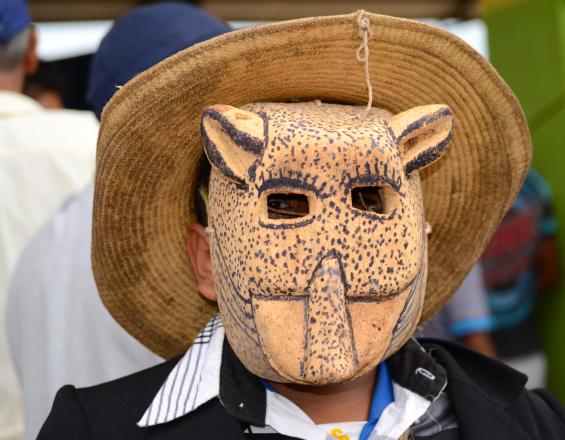
The relationship of humans as a component of nature has generated a wide range of interactions, one of them being the biocultural relationship of the jaguar and nature with the indigenous populations of the Americas. This unique relationship is one of the few relationships that persist today, despite the historical processes that have affected it.
The jaguar in the pre-Hispanic world, and still in some areas of Mexico, is considered the heart of the forest; guardian and god of the natural spaces. Despite its cultural and biological richness, social and environmental conditions have reduced its symbolic, material and ecological space.
Biofutura is a pioneer in applying a biocultural and ethical model for the conservation of nature, through the restructuring of the human-nature relationship, being the jaguar a key species to bring people closer to nature, to their cultural roots and to the understanding of animality and its relationship with bioethics.
Context
Challenges addressed
One of the main challenges in biocultural and ethical conservation is that the loss of cultural wealth is simultaneous with natural loss. In many areas where there is a biocultural relationship with the jaguar, this feline has been extirpated from its natural environment, leaving a deep void in indigenous societies. Fortunately, with appropriate conservation practices, we can return the jaguar to the rural sites where it had been extirpated.
The economic challenge is great, since in Mexico, support for civil society organizations is almost non-existent. The environment and non-human animals are on the periphery, invisible and marginalized. However, our group carries out multiple actions to generate resources to help.
This type of activities of biocultural and ethical rescue of nature implies a high professionalism and very broad knowledge in the field, fortunately Biofutura is a highly trained group.
Location
Process
Summary of the process
The biocultural and ethical protection of a species and its habitat is integral. There can be no real conservation in indigenous peoples and communities without them being taken into account.
Education, research and public policy formulation must be woven into a biocultural fabric.
Building Blocks
Education for liberation; ethics and nature
A transcendental element is education as a practice of freedom for the conservation of nature. Through horizontal workshops, we encourage students in megadiverse rural sites to strengthen their vision of the world in order to transform it, and thus reincorporate nature as an intrinsic element of societies, based on ethics and respect for all beings with which they coexist.
Educators become part of the learners' society and together we seek the process of decolonization of the reductionist thinking that considers nature as a thing, an object of the market, something that can be destroyed.
We transform this erroneous vision of nature with an educational model that seeks to reincorporate an ontological and ethical value to nature.
From the periphery, education incorporates the knowledge of the other.
Enabling factors
Educators and researchers are a fundamental part of the activities, likewise, the pedagogical model used in the educational process is vindicating, seeks transformation and freedom, and thus, we build a pedagogy of nature conservation with bioethical elements.
Lesson learned
During more than a decade of conservation activities, from bioethical and biocultural dimensions, we have become aware of the great marginalization and invisibility of rural areas in Mexico.
Currently, there is an erroneous reductionist vision of nature, of non-human animals and even of people living in rural areas.
It is important to have a broad collaborative work with the oppressed from a horizontal approach.
One should never have a colonialist thinking, nor impart a banking education. One should always opt for an education for freedom.
Rescue and safeguarding of the biocultural heritage of the jaguar and its habitat.
Through ethnographic, sociological and, in general, social science studies, activities are carried out for the protection of biocultural elements at risk. These elements are then incorporated into societies with the support of education.
Enabling factors
It is necessary to have a plural group specialized in social issues or with institutions that collaborate in the activities, in order to have a specialized work that supports the biocultural conservation of nature.
Lesson learned
Field work is a priority for these activities, and collaboration with people in rural areas is indispensable and should always be included.
Public policies for the biocultural protection of the jaguar
The creation of public policies that protect the jaguar from biocultural and ethical dimensions is of great importance, since adequate conservation is integral.
Currently, we have requested federal authorities to consider the jaguar as intangible cultural heritage and in some Mexican states - Oaxaca - the jaguar has been considered as intangible cultural heritage.
Likewise, we have managed to escalate an IUCN motion that gives a guideline to a continental conservation of the jaguar that includes biocultural and ethical schemes.
It is essential that all governments in the Americas that have jaguars in their distribution protect this species from a biological, socio-cultural and ethical point of view.
This jaguar-human relationship is so important that it should be protected worldwide by UNESCO and declared intangible cultural heritage of humanity.
Enabling factors
Strengthening and social cohesion.
Dissemination of the jaguar's biocultural wealth.
Integral approach to nature conservation.
Visibility of indigenous peoples and communities.
Participation of indigenous peoples and communities in conservation.
In our activities we have had the support of the National Alliance for Jaguar Conservation to influence public policies in favor of the jaguar, its habitat and its biocultural relationship.
Lesson learned
The participation of diverse social actors, as well as civil organizations and NGOs, is important.
Unfortunately, in Mexico, the incidence of civil society in public policies is very complicated due to the lack of channels of civility and good governance. However, social participation can have a positive impact on these activities.
Impacts
For more than 10 years we have given workshops in biodiverse sites with indigenous rural population in different parts of Mexico.
We have achieved the creation of several groups of young rural nature protectors, creating citizen science and empowering nature conservation, in addition to influencing public policies and governance factors based on ethics, non-human animal rights and conservation, building a hope of good living and coexistence between human populations as part of nature.
We have carried out community intervention processes for the rescue and safeguarding of the jaguar as intangible cultural heritage in indigenous areas of central Mexico.
We have achieved that people from indigenous rural communities protect megadiverse rural environments by connecting nature, ethics and culture, rescuing animals from processes such as confinement and hunting, giving them a new life value and changing the paradigm of conservation and development.
Beneficiaries
Direct beneficiaries are nature, non-human animals and indigenous rural populations. Indirect beneficiaries are all people.
Sustainable Development Goals
Story
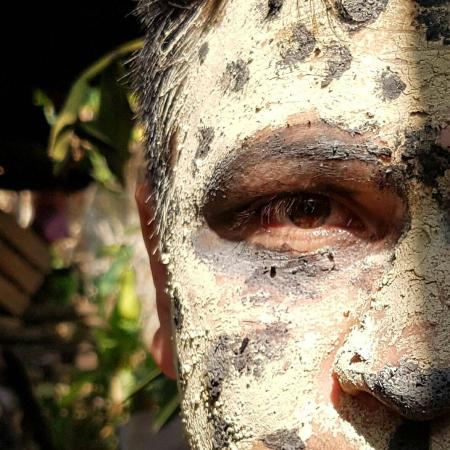
The relationship of humans as a component of nature throughout history has generated a wide range of interactions, one of them being the biocultural relationship of the jaguar (Panthera onca) and nature with the indigenous populations of the Americas. This relationship is unique on the planet and is one of the few biocultural relationships that still persist today, despite the historical processes that have affected the cosmovision, society and natural spaces of the peoples of the Americas.
The jaguar in the pre-Hispanic world, and still in some rural areas of Mexico, is considered Tepeyollotl, the "heart of the mountain", the guardian and god of the mountains, of the natural spaces.
The practices associated with the jaguar have a profound intercultural similarity, rooted in an articulated complex of cultural elements highly resistant to change, which act as structuring elements of the traditional heritage.
Despite the cultural and biological richness of this feline, social and environmental conditions have reduced its symbolic, material and ecological space.
The mystery and magic of the jaguar, as well as its recurrence in the vital cycles of cultural and environmental reproduction, will remain in force as long as this imposing animal continues to exist.
The biocultural approach to conservation, sustainable development and the protection of natural areas must be based on the cultural elements of indigenous peoples and bioethics.
Conserving natural areas is more than a biological priority, it is to recognize that natural areas become sacred sites and that they are living elements with a strong symbolism, and that by destroying them, not only biodiversity but also cultural diversity is destroyed, condemning the most vulnerable to oblivion: rural populations and non-human animals.
In Mexico, the organization Biofutura AC is a pioneer in applying a biocultural and ethical model for the conservation of nature and Natural Protected Areas, through the biocultural and ethical restructuring of the human-nature relationship in megadiverse sites; being the jaguar a key species to bring people closer to nature, to their cultural roots and to the understanding of animality and its relationship with bioethics.

